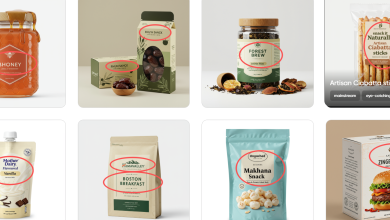
Generative AI is revolutionising the way in which we create content, producing everything from text and images to complex videos. Tools like ChatGPT, Claude and DALL-E are already reshaping industries, and advertising is no exception.
Take Coca-Cola’s recent Christmas campaign, for example, which faced a backlash online for the fact it was produced entirely through artificial intelligence. The iconic ad is a Christmas staple, but by using AI to reimagine its much-loved ‘Holidays Are Coming’ trucks, the brand demonstrated how AI can innovate while staying rooted in tradition.
Applications like these are impressive, fun and engaging for consumers. But they also highlight a key limitation that generative AI can lack the human touch that we expect in storytelling.
Above-the-line marketing campaigns driven by AI can certainly dazzle with visuals, but the real promise of generative AI lies in its ability to create personalised experiences — those unexpected, tailored moments that make a digital or in-store interaction feel unique.
Think Nutella, with its ‘Nutella Unica’ campaign that used AI to take personalisation to a new level. Using algorithms, it generated seven million unique labels for jars, so that no two were the same and sold out in Italian supermarkets in a month. Although they were all different, the logo and branding remained constant.
Another iconic brand, Cadbury released a generative AI powered tool last year to celebrate its 200 year anniversary that allows you to put your face on one of its classic posters.
Facing generative AI challenges
Despite its potential, generative AI faces significant challenges. Among these is the nuance needed to create content that feels truly authentic or relevant to audiences. Generative AI’s outputs depend heavily on its training data. It is only as good as the data set it has learned from, and often this is biased in terms of representation. If the data is inconsistent or too broad (or indeed too narrow), the resulting content can come across as generic, tone-deaf or irrelevant.
Generative AI also struggles with maintaining brand consistency and contextual understanding. Without a deep grasp of a brand’s tone, audience preferences and cultural sensitivities, generative content risks misalignment with a brand’s established identity and tone, leading to outputs that feel off-brand or inauthentic. At risk is a brand’s overall integrity.
This will be a key focus as the monetisation of major AI chat apps is mooted. In the not-too-distant future, these apps could well evolve into powerful advertising channels in themselves, akin to an advanced version of search. However, brands would have to surrender significant brand control to the autonomous nature of responses provided by the AIs.
The emergence of platforms like DeepSeek is making the space increasingly competitive. Without clear strategies and guidance on how to use these tools effectively, brands risk losing their ability to stand out and connect with their audiences.
The predictive AI lifeline
While generative AI excels at content creation and creativity, predictive AI can complement it by analysing data, identifying patterns and forecasting outcomes.
Predictive AI is particularly effective in audience targeting and personalisation, allowing brands to track customer journeys and adjust campaigns in real-time. By analysing historical data tied to individual profiles, predictive AI ensures that generative outputs are relevant and timely.
It identifies behaviours, preferences and purchase intent, enabling marketers to anticipate customer needs. This data-driven approach focuses on individual nuances over similarities, maximising campaign effectiveness and creating consistency across channels, ensuring campaigns reach the right audiences at the right time in an increasingly fragmented advertising landscape.
Performance optimisation is another strength of predictive AI. It can evaluate the potential success of generative assets before deployment, continuously reassessing opportunities based on marketers’ goals and budgets. Predictive AI, for example, can forecast click-through or conversion rates using historical data, allowing marketers to prioritise high-performing assets and refine strategies in real-time.
Finding the right balance
The synergy between generative and predictive AI represents the future of marketing, bridging the gap between the art and science of the industry. It unlocks huge advantages both behind the scenes and in consumer-facing campaigns.
One exciting development is the potential to make predictive analytics more accessible. Large language models (LLMs) are simplifying how brands derive insights from their first-party data.
AI is also changing the way marketers create data-driven marketing personas. By analysing customer data, AI can generate in-depth profiles of ideal customers that allow marketers to craft strategies that resonate deeply with their target audiences.
Then there’s real-time decisioning. As the industry leans into the concept of ‘agentive AI’, marketers will naturally explore the ability to create entire ads — from copy to visuals to calls-to-action — automatically in response to sudden events, sports results and weather changes. The systems being developed will do an incredible job of predicting which creative elements will have the most emotional impact.
However, balance is critical to unlocking AI’s full potential, ensuring brand safety and content appropriateness. While AI offers a new level of creative diversity, human oversight remains essential to ensure outputs align with brand values and resonate authentically.
By combining generative AI’s huge creative potential with the data-driven precision of predictive AI, brands can create innovative, effective campaigns while maintaining control, relevance and a positive customer experience. This balance is key to navigating the complex advertising landscape and achieving success.





